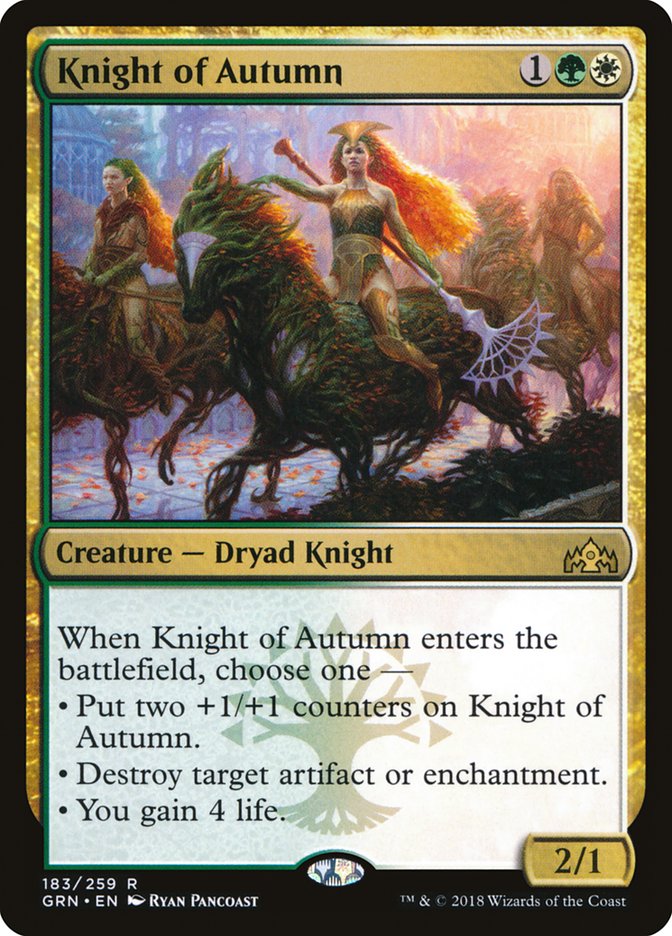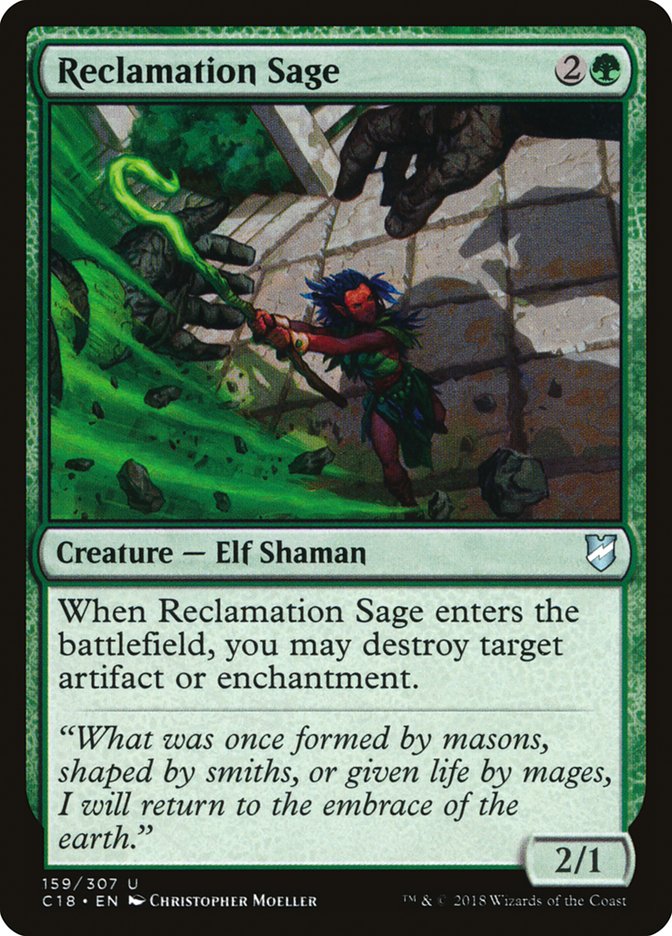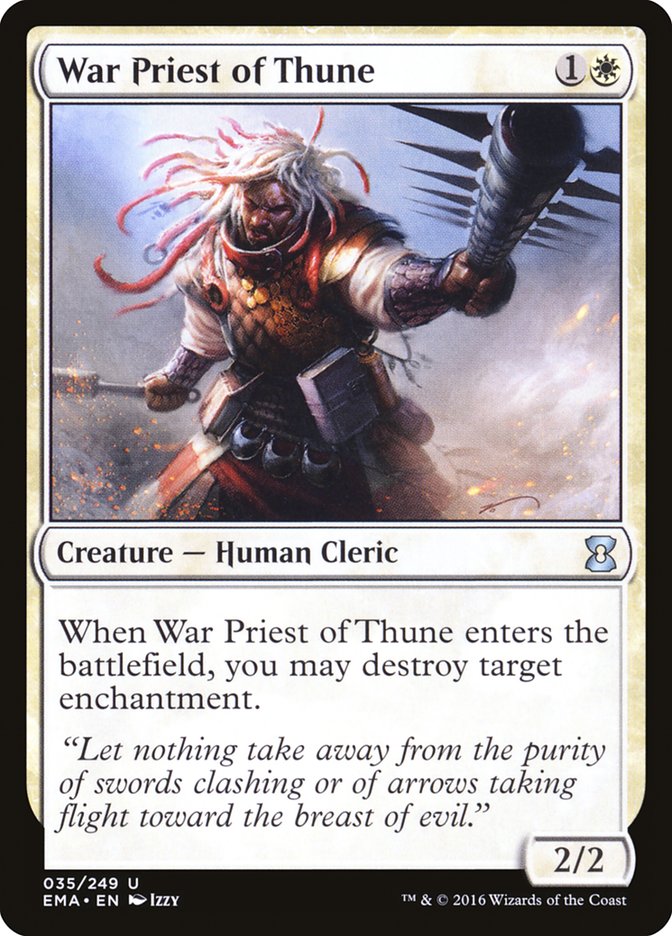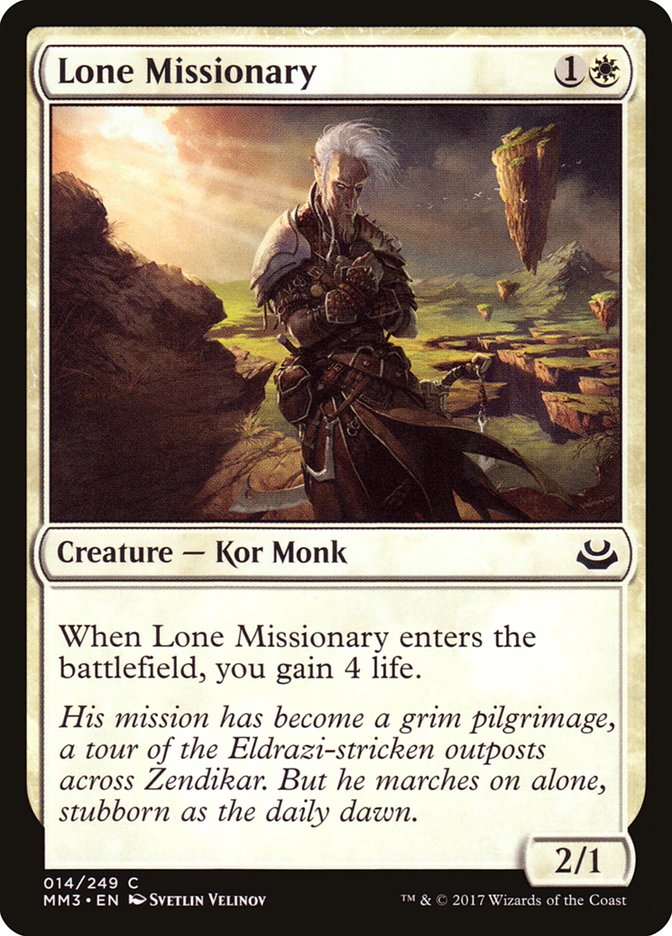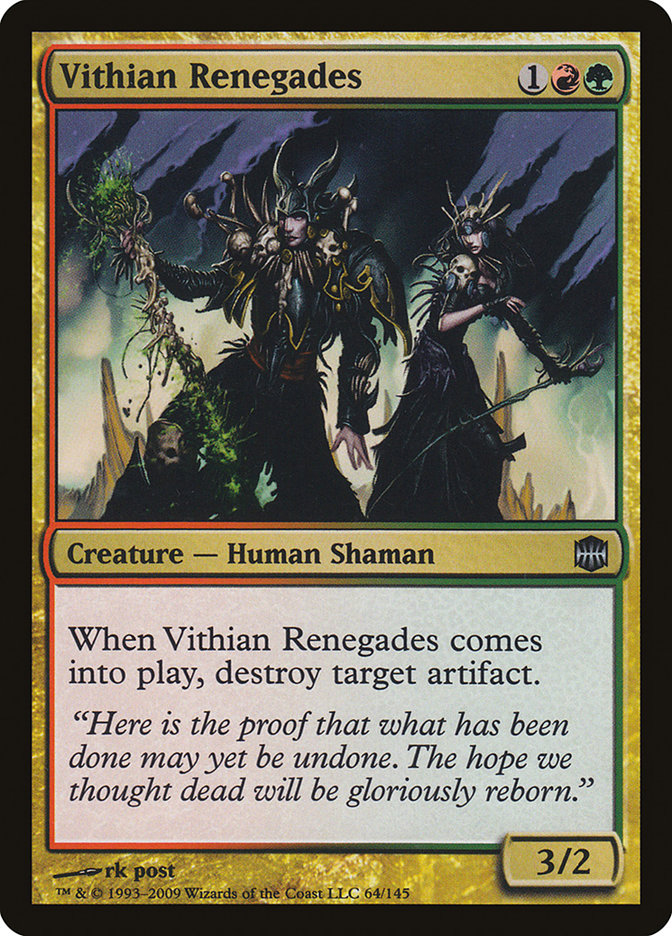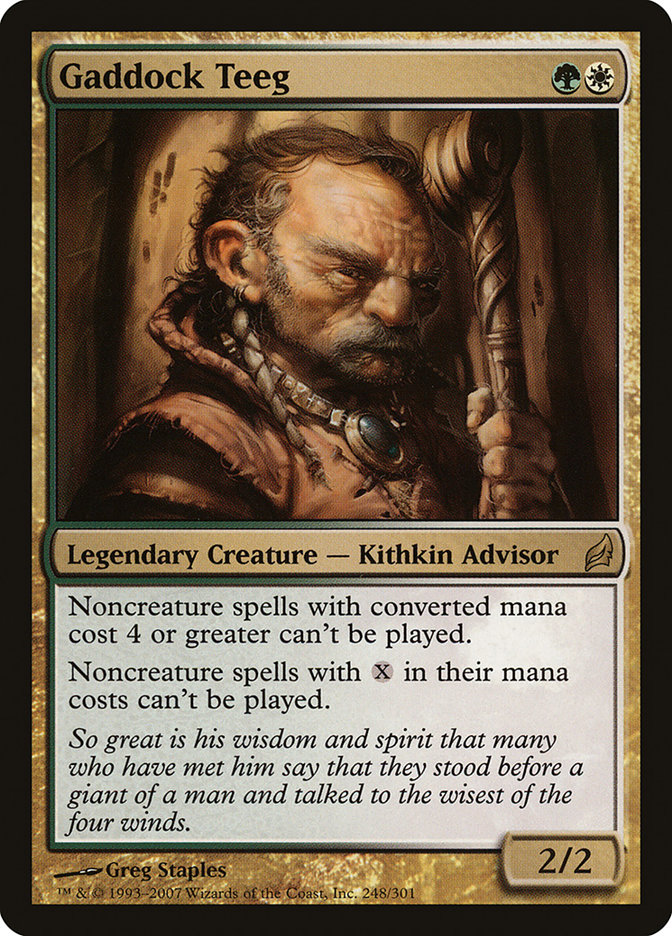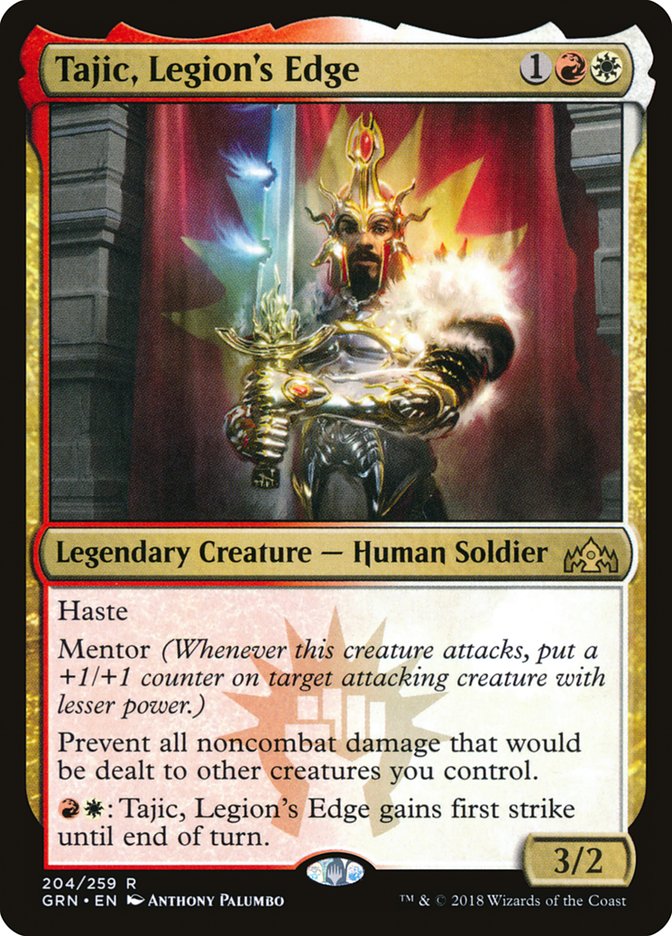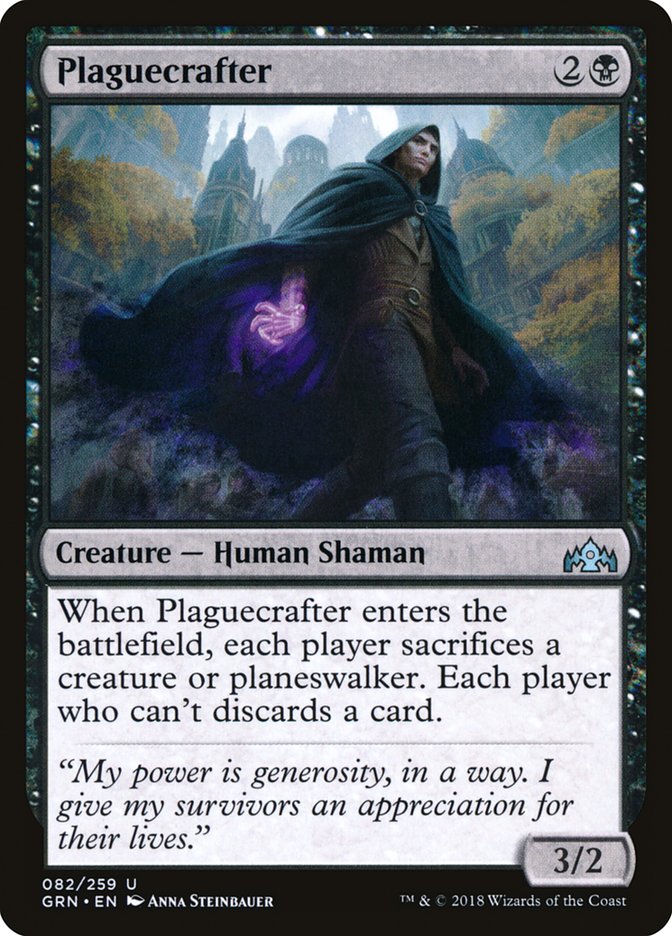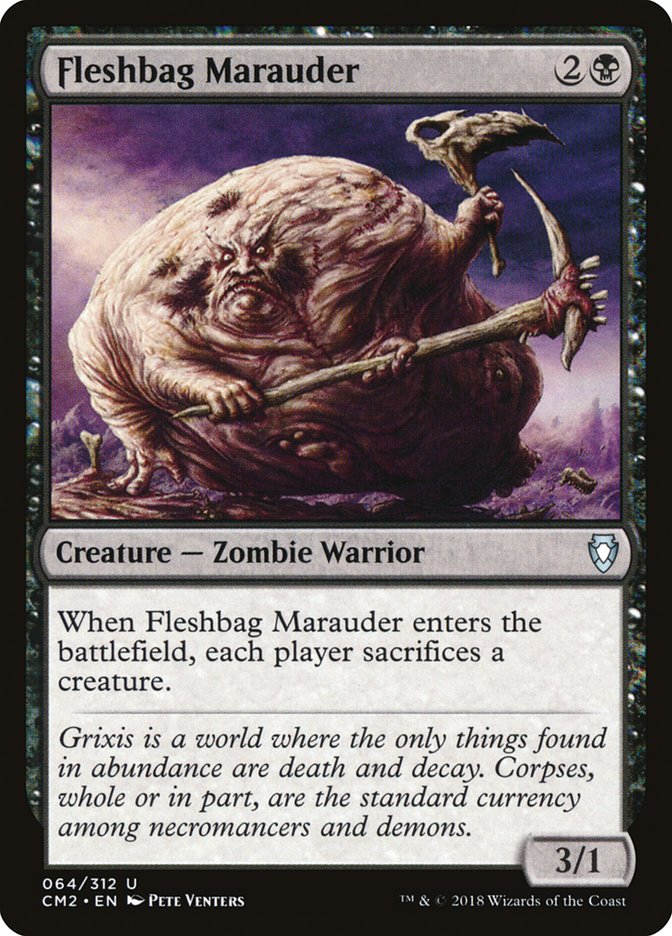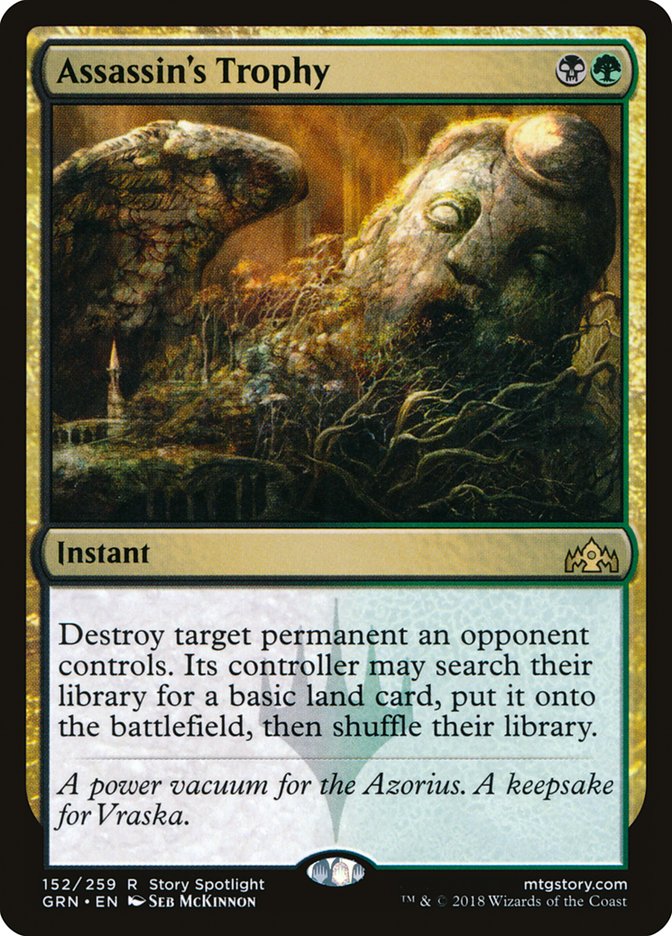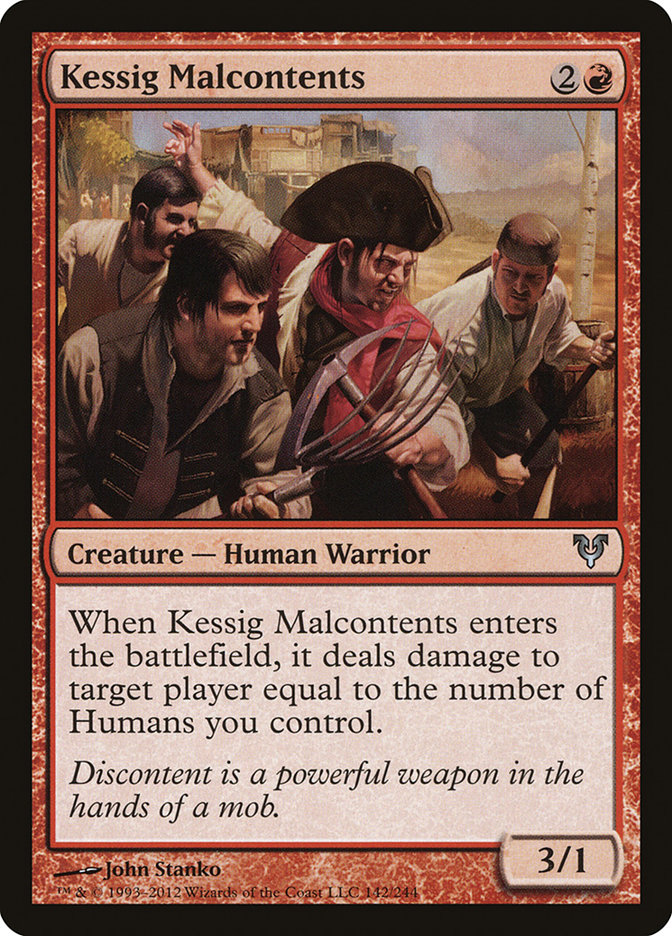New set release time is one of the most enjoyable times to be a Magic
player. Compounded with the fact that one of the most infamous blocks in
Magic’s history is leaving Standard, many are looking forward to the
thought of building exciting new decks in the format again. However, that
doesn’t mean there isn’t anything to talk about regarding how Guilds of Ravnica will influence Modern!
I’ve been eating, sleeping, and breathing Modern Humans since my first
tournament with the deck at the SCG Columbus Modern Open in January of this
year. Through my numerous successes and failures with the deck during this
time, there’s one thing I’ve learned above all else playing the deck on the
SCG Tour: Humans needs to be adapting every single week to changes in the
Modern metagame. Being a five-color deck featuring one of the most common
creature types in Magic means there are a slew of powerful tools available
at any given time that aren’t being utilized. With every new set release,
the cast of potential recruits to the tribe grows ever larger.
Guilds of Ravnica
looks to continue this trend, as many of the members of the Boros Legion,
Izzet League, and House Dimir just so happen to be Humans. On top of that,
the Selesnya Conclave looks to offer the deck one of the most powerful
sideboard upgrades in quite some time.
Knight of Autumn; Tajic, Legion’s Edge; and Plaguecrafter are strong
enough cards on their own to make them worth discussing, and I’m excited to
take a deep dive into why each potentially has a home in Modern’s most
powerful tribal deck.
Let’s start with Knight of Autumn, the best Human printed in the set!
Wait, what’s that? You mean Knight of Autumn isn’t a Human?
Knight of Autumn joins the cast of honorary Humans that have found a home
in the sideboard of the deck since its inception, including Kataki, War’s
Wage, Gaddock Teeg, Reclamation Sage, and Selfless Spirit. Knight of
Autumn’s three modes are all very relevant in the Modern format and the
floor is exceptionally high for a card that costs only three mana.
Ironically enough, the Dryad Knight will likely have the highest and most
immediate impact on Humans as we know it. There’s a ton to talk regarding
Knight of Autumn in Humans, but first, let me preface all these talking
points with the most important:
In Humans, Knight of Autumn is a very important upgrade to Reclamation
Sage.
Earlier this year, Reclamation Sage replaced Vithian Renegades as the
sideboard creature of choice in Humans when it came to taking care of
artifacts. The additional point of power and toughness, as well as the
relevant creature type, were deemed less important than the ability to
destroy game-ending enchantments like Worship, Ghirapur Aether Grid, Blood
Moon, Hardened Scales, and Daybreak Coronet. Additionally, finding room for
War Priest of Thune to complement Vithian Renegades was simply too costly
in a format where your sideboard slots are already stretched incredibly
thin. As such, Reclamation Sage seemed like the best tool for the job.
The problem with Reclamation Sage, however, is that the floor on the card
is incredibly low. If you aren’t making use of the enters-the-battlefield
ability, the card would frequently waste away in your hand until it was
your last card to deploy. For example, it’s often correct to side in one or
two copies of Reclamation Sage in the mirror to help ensure your opponent
doesn’t have an active Aether Vial for too long, but it’s the only target
in the matchup and sometimes comes down too late to matter much. Against
Burn, it’s correct to side Reclamation Sage in to hedge against opposing
Ensnaring Bridges or Eidolon of the Great Revel, but having three-mana
spells against Burn can be an enormous liability unless they actually do
something. On top of that, not being able to carry a counter from Thalia’s
Lieutenant meant that the weak body would rarely matter much in combat. To
put things into a visual perspective, Knight of Autumn is a modular card
that combines all the following cards into one:
Don’t like any of these options? Have a 4/3 body!
At this point, it may seem strange that I’m hyping up a card that will
almost assuredly reside solely in the sideboard of Humans. Normally, an
upgrade to a sideboard card wouldn’t be so significant, if it weren’t for
the fact that sideboard slots in Modern are so precious. Every time you can
increase the power level or otherwise overlap the functionality of your
sideboard cards in Modern, you’re adding free matchup percentage points
against the field as a whole. Knight of Autumn serves an important role as
a reactive card when you need it that can turn into a powerful proactive
threat when it’s needed.
Let’s look at some examples of matchups that benefit from the addition of
Knight of Autumn:
-
Against Humans, Knight of Autumn can help you hedge against Aether
Vial and allow you to race when your opponent doesn’t have a Vial
going. -
Against Burn, you can use Knight of Autumn to gain life to help you
not get burned out, then follow up with a Phantasmal Image copying
it to destroy an Ensnaring Bridge or Eidolon of the Great Revel
should you need to or vice versa. -
Against Hollow One, Knight of Autumn can come in as a potent threat
with a relevant body that’s resilient to Grim Lavamancer that can
also destroy a stray Hollow One. This is an example of, where
previously, Reclamation Sage’s power and toughness made it not
worth siding in. -
Removal-based midrange and control decks in Modern like Jund,
Mardu, and Jeskai tend to have a good matchup against Humans due to
their ability to disrupt Humans’ synergy-driven gameplan. In these
matchups, Knight of Autumn can come in and serve as a strong
standalone threat that requires an answer (even if it does die to
Lightning Bolt). It may even snag a Blood Moon or Ensnaring Bridge
out of Mardu or a Search for Azcanta against Jeskai along the way!
Before I move on to discussing Tajic, I would like to address the potential
concern for castability of Knight of Autumn due to its mana cost, since it
is not a Human. However, rather than use my words, I’ll just use pictures
instead:
Alright, I’ll say a few words.
While playing non-Humans does create awkward play patterns with the tribal
lands on occasion, green and/or white creatures get a little bit more of a
pass since Noble Hierarch as well as all the non-tribal lands (save for the
one-of basic island) tap for white and/or green mana. Gaddock Teeg has
found a home in Humans’ sideboard and has been an integral sideboard option
for months despite the casting cost, and the castability of the card has
rarely come into question in that time. Knight of Autumn will be no
different, and I’m beyond ecstatic to have such an exceptional upgrade
waiting for me when Guilds of Ravnica releases.
Now, let’s talk about an actual Human, shall we?
With Tajic, I have some good news…and some bad news.
I’ll start with the bad news. Tajic probably doesn’t have a home in the
traditional build of Humans as Tajic doesn’t mesh well with the most
popular build of the deck. It would ultimately compete for the highly
contested three-drop slots that Militia Bugler, Kessig Malcontents, and/or
Thalia, Heretic Cathar currently occupy, and I don’t think he’s stronger
than pre-existing options. Additionally, the activated ability is
essentially flavor text.
The good news? Tajic breathes some potential life into a much more
aggressively-slanted version of Humans:
Creatures (35)
- 4 Noble Hierarch
- 4 Phantasmal Image
- 4 Champion of the Parish
- 1 Avacyn's Pilgrim
- 4 Mayor of Avabruck
- 3 Thalia, Guardian of Thraben
- 3 Tajic, Blade of the Legion
- 4 Mantis Rider
- 4 Reflector Mage
- 4 Thalia's Lieutenant
Lands (19)
Spells (4)
Sideboard

This is a very rough draft, but I believe that there’s something here. One
of the best things that the stock builds of Humans does is its signature
turn 4 kill, and this build aims to do it nearly every game. In a
twelve-lord build like the one above, Tajic finds a much better home in
that the Mentor triggers will be significantly more useful due to Tajic
getting buffed more frequently from multiple copies of Mayor of Avabruck
and Thalia’s Lieutenant.
The biggest question I have for this build of the deck is whether the trade
in disruption for aggression is worth it. I tried to keep some of the
disruptive elements intact by placing a few copies of Meddling Mage into
the sideboard and keeping the maindeck copies of Thalia, Guardian of
Thraben and Reflector Mage, but it remains to be seen where, what, and how
much disruption can go in this version of the deck without having it be too
close to the original. Additionally, I briefly considered Swiftblade
Vindicator, but I fear that it requires far too much work to make useful
and doesn’t do enough on its own to justify inclusion.
Last, but not least, is Plaguecrafter.
The before and the after photos.
Plaguecrafter, on the surface, appears to do a lot. When I first saw this
card, I thought of a couple scenarios this card would prove useful:
-
It can serve as cheap removal for a troublesome Planeswalker like
Jace, The Mind Sculptor, Liliana of the Veil, Karn Liberated, or
Teferi, Hero of Dominaria. -
It can be put onto the battlefield at instant speed via Aether Vial
in response to a removal spell, allowing you to sacrifice the
creature targeted for a value play.
The largest questions that arise regarding Plaguecrafter is where it
belongs in the deck and what slots it should occupy. I don’t believe it to
be stronger than Reflector Mage as far as creature removal is concerned, so
I don’t think there’s room in the maindeck. The first sideboard slot I
could see it replacing is Dismember, but it remains to be seen if the trade
in mana cost to deal with planeswalkers is worth it. My initial opinion of
Plaguecrafter is fairly lukewarm, and I think its potential comes mostly in
its ability to handle planeswalkers.
I’m going to say that the jury is still out on if Plaguecrafter is playable
in Humans right now, but it has enough potential that it’s certainly worth
discussing. The niche ability to deal with planeswalkers cleanly is
something Humans has never had access to previously. The question is
whether this kind of effect is really necessary.
Now that I’ve covered all the above, I’d like to briefly address what
Assassin’s Trophy means as a Humans player for at least the first few weeks
post-Guilds of Ravnica release.
Since Assassin’s Trophy will likely be one of, if not, the biggest
cards to see play in Modern from Guilds of Ravnica, I have a few
things to say that I will summarize as follows:
-
It’s reasonable to expect an increase in Golgari-based decks Jund,
Abzan, or Golgari itself in the coming weeks, similarly to how
Bloodbraid Elf caused an uptick in Jund following its unbanning. If
this occurs, consider cards like Dire Fleet Daredevil and Militia
Bugler to help these matchups. -
Assassin’s Trophy’s potential prevalence leads me playing two basic
lands (1 Island and 1 Plains) with the option of playing a third
very much in play (probably a second Plains over the Seachrome
Coast). It’s unlikely and probably a bit extreme, but I was a late
adopter of the Island over the second Seachrome Coast, so I’ve
learned to never say never when it comes to changes in Humans. If a
Golgari deck that leans on numerous copies of Field of Ruin and
Ghost Quarter as mana disruption becomes ubiquitous, this change
will become necessary. -
Some players may use Assassin’s Trophy too aggressively on your
permanents early in a game. If they destroy a creature with it, it
may give you the extra resources you need to deploy an extra threat
a turn earlier. Use this to your advantage.
If you’ve made it to this point, you’ve hopefully gained some valuable
insights from my analysis of four of the most important cards from Guilds of Ravnica. With all these considerations in mind, this is
where I plan to start my testing and will likely play something within 3-4
cards of this list for the Modern seat at SCG Columbus this weekend:
Creatures (37)
- 4 Meddling Mage
- 4 Noble Hierarch
- 4 Phantasmal Image
- 4 Champion of the Parish
- 4 Thalia, Guardian of Thraben
- 1 Kessig Malcontents
- 4 Mantis Rider
- 4 Reflector Mage
- 4 Thalia's Lieutenant
- 4 Kitesail Freebooter
Lands (19)
Spells (4)

If it wasn’t already apparent, I believe that the power level of Knight of
Autumn in the sideboard of Humans to be very high. As such, I swapped the
two copies of Reclamation Sage for two copies of the Dryad Knight and added a third to the sideboard because I believe Knight of
Autumn is simply that good and that versatile. The rest of the
sideboard is fairly unchanged from my SCG Syracuse list,
save for the addition of a single copy of Anafenza, the Foremost, a nod to
Hardened Scales, Ironworks, and Rakdos Vengevine.
Kessig Malcontents continues to impress me right now as the flex slot
three-drop of choice in Humans. The Modern metagame heading into SCG
Syracuse appeared to be speeding up and this certainly ended up being the
case; I faced a slew of decks looking to drag race throughout the
tournament, including five Boros Burn decks! The pitchfork
wielding crew did a lot of work over the weekend, carrying me to a Top 4
finish and helping me win some of my tougher matchups, including my
quarterfinals match against Hardened Scales. I believe that Kessig
Malcontents continues to be the best option as we head into SCG Columbus
over Thalia, Heretic Cathar and Militia Bugler. Many of the newer decks
that have shown up in Modern recently, like Rakdos Vengevine, Hardened
Scales, and Bant Spirits, all have reasonable game against Humans due to
their ability to prevent profitable attacks. Kessig Malcontents allows you
to circumvent this by frequently being able to shave an entire turn off the
clock without ever having to utilize the attack step.
The decision to play the fourth copy of Thalia, Guardian of Thraben in the
maindeck stems from a reaction to the Modern metagame from SCG Syracuse. If
I end up going back to three copies of the legendary 2/1, I would likely
move the second Kessig Malcontents back to the maindeck and add a Hostage
Taker or second Whirler Rogue to the sideboard.
Speaking of sideboards…
VS Humans
Out:
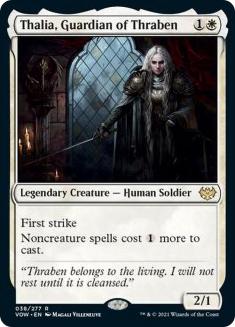



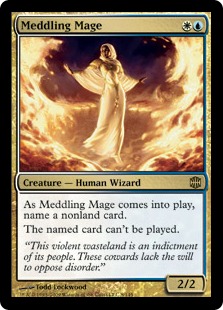



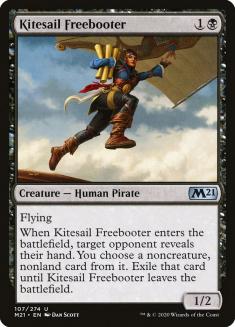

In:
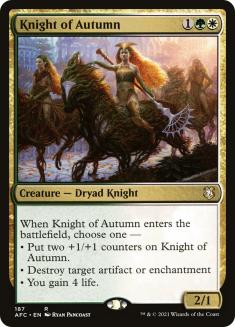


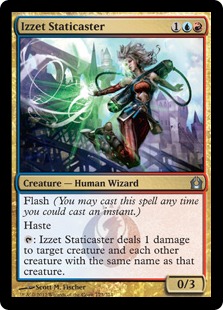

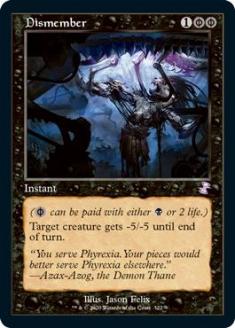

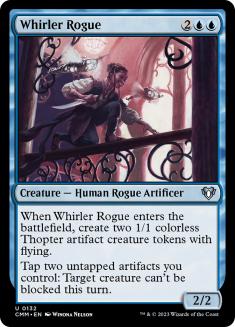
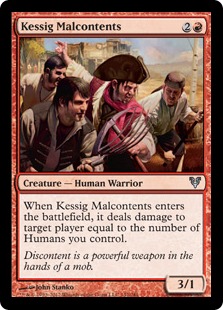

VS Azorius Control
Out:
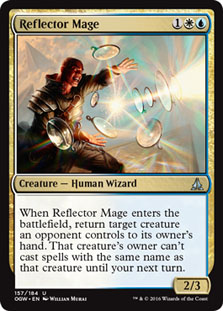



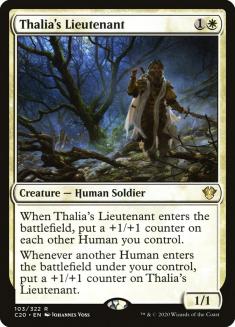




In:
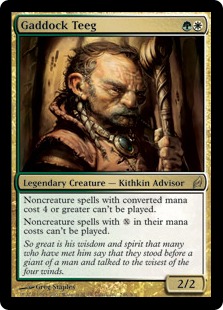



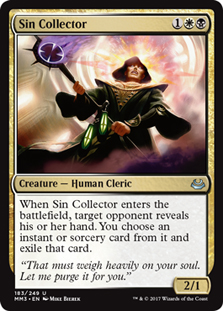




VS Burn
Out (on the play):







In (on the play):







Out (on the draw):







In (on the play):







Out:











In:











VS Bant Spirits
Out:









In:









If playing against strictly Azorius Spirits with Aether Vial, consider
cutting Meddling Mage instead of Kitesail Freebooter.
VS Tron
Out:







In:







Thalia loses a ton of her power on the draw in this matchup. Consider
cutting the remaining two copies on the draw for two Reflector Mages.
VS Hollow One
Out:









In:









Meddling Mage naming Lightning Bolt game
1
is usually fantastic, but after sideboard, Grim Lavamancer, Fatal Push,
and Collective Brutality make the card much less effective. Thalia is
frequently too slow to stop their noncreature spells, especially on the
draw. Go for large creatures, remove theirs, and the match should be
yours.
VS Golgari-Based Midrange (Golgari, Jund, and Abzan)
Out:








In:








Cutting Meddling Mage is typical as there are frequently too many
different cards to name. This sideboard plan aims to bring in
individually powerful cards that all require an answer. Knight of
Autumn will most likely default to being a three-mana 4/3, and it’s
likely a good copy target to make more of with Phantasmal Image. If
you’re anti-Aether Vial in these types of matchups, as some are (I’m
usually not), swap 3 Aether Vials for Sin Collector.
VS Storm
Out:





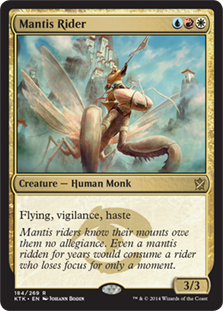


In:








VS Jeskai Control
Out:










In:










VS Ironworks
Out:







In:







All eyes will most likely be on the Standard seat at SCG Columbus, as the
Magic community collectively celebrates the exit of the Kaladesh
and Amonkhet blocks from Standard. The arrival of some awesome new Guilds of Ravnica cards are certainly bound to shake up the format
and get people excited. As you can imagine, I’ll be doing battle in the
Modern seat alongside my teammates, Noah and Luke Strasler, who both
already have a Team Constructed Open Top 8 under their belt.
Welcome to Guilds of Ravnica! Please enjoy your stay, fellow
Champions of the Parish!


